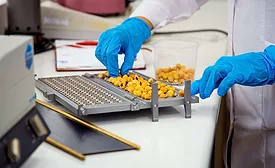Risk Assessment
Beyond the Score: Risk-Focused Audits and the Ethics of Prevention
An urgent call to rethink food safety auditing from the ground up
June 24, 2025
Making Risk Assessments Practical: Spotting and Preventing Food Safety Hazards
Risk assessments are sometimes reduced to paperwork exercises, missing the opportunity to prevent food safety failures
June 19, 2025
Fundamentals of a Retain Sample Program
A retain sample program ensures that production samples from each lot of product manufactured are retained onsite
June 18, 2025
Safeguarding the Spice Industry: Strategies for Contamination Prevention and Quality Control
By integrating regulatory mandates with strong internal controls and industry best practices, spice manufacturers can enhance food safety and maintain the integrity of their products
June 17, 2025
Never miss the latest news and trends driving the food safety industry
eNewsletter | Website | eMagazine
JOIN TODAY!Copyright ©2025. All Rights Reserved BNP Media.
Design, CMS, Hosting & Web Development :: ePublishing













